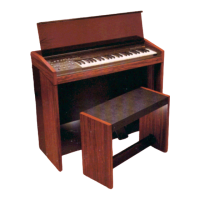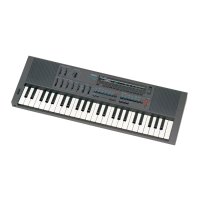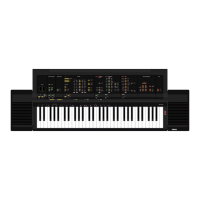Basic Structure
Internal Memory and File Management
187
Owner’s Manual
Internal Memory
Below are explanations of the basic terms used in the Memory Structure illustration on the previous page.
● Flash ROM
ROM (Read Only Memory) is memory designed specifically for reading out of data, and as such data cannot be written to it.
Unlike conventional ROM, Flash ROM can be overwritten – allowing you to store your own original data. The contents of Flash
ROM are maintained even when the power is turned off.
● DRAM
RAM (Random Access Memory) is memory designed specifically for data writing and data reading operations. There are two
different kinds of RAM, depending on the condition for storing the data: SRAM (Static RAM) and DRAM (Dynamic RAM).
The created data stored on DRAM is lost when the power is turned off. Because of this, you should always store any data
residing in DRAM to the SmartMedia/USB storage device before turning off the power.
● DIMM
DIMM modules must be installed in order to use the Sampling function or to load audio data (Waveform/WAV file/AIFF file) to the
instrument. As with DRAM described above, the created data stored on DIMM is lost when the power is turned off. Because of
this, you should always store any data residing in DIMM to the SmartMedia/USB storage device before turning off the power.
● Edit Buffer and User Memory
The edit buffer is the memory location for edited data of these types: Voice, Performance, Master, Song Mixing, and Pattern
Mixing. Data edited in this location will be stored to the User Memory.
If you select another Voice, Performance, Master, Song, or Pattern, the entire contents of the edit buffer will be rewritten with the
newly selected Voice/Performance/Master/Song Mixing/Pattern Mixing data. Make sure to store any important data before
selecting another Voice, etc.
● Edit Buffer and Recall Buffer
If you’ve selected another Voice/Performance/Song/Pattern without storing the one you were editing, you can recall your original
edits, since the edit buffer’s contents are stored in backup memory.
n Keep in mind that the recall buffer is not available in the Master Edit mode.

